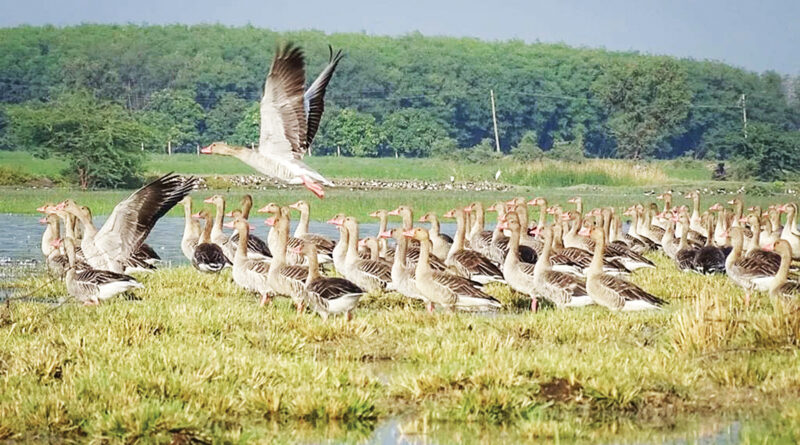Thane creek gets RAMSAR status
Thane created history as its creek located within an urban agglomeration received the Ramsar status and is now a designated Ramsar site. With this achievement of Thane, the Mumbai Metropolitan Region (MMR) has become possibly the only metropolitan region in the world to have a wildlife sanctuary, a flamingo sanctuary, and a Ramsar site in its geography.
A Ramsar site is a wetland of international importance. The designation aims to develop and maintain an international network of wetlands that are important for conserving global biological diversity and sustaining human life through maintaining their ecosystem components, processes, and benefits.
The Thane creek, among Asia’s longest, abuts the coast of Mumbai. While its western bank is in Mumbai and Mumbai suburban districts, the eastern bank is in Thane district and adjoins Thane city and Navi Mumbai.
The creek extends 26 km north of Mumbai harbour, connecting with the Ulhas river, one of its primary sources of fresh water, via a narrow channel. It encompasses an area of 6,521.08 hectares, of which 1690.5 ha were declared the Thane Creek Flamingo Sanctuary (TCFS), and 4,832 ha were notified as an eco-sensitive zone around the sanctuary in October 2021. It is now also the largest wetland area to be declared a Ramsar site in Maharashtra.
The creek is fringed by mangrove forests on both banks that serve as a nursery for several species of fish and protect the land from cyclones, tidal waves, seawater seepage, and intrusions.
What is Ramsar Status?
The Ramsar Conference was held at Ramsar in Iran in 1971. Several decisions about the conservation and preservation of wetlands and mangrove forests worldwide were taken at the conference, and an action plan was prepared.
According to this plan, each participating country has to identify globally important wetlands and declare them Ramsar sites. Lakes, rivers, ponds, swamps, creeks, seashores, and even paddy fields can be thus designated.
India’s Ramsar race
India is one of the contracting parties to the Ramsar convention, signed in Ramsar, Iran, in 1971. India signed the way on February 1, 1982. From 1982 to 2013, 26 sites in India got the Ramsar tag. Since 2014, however, the country has added 49 wetlands to the list.

